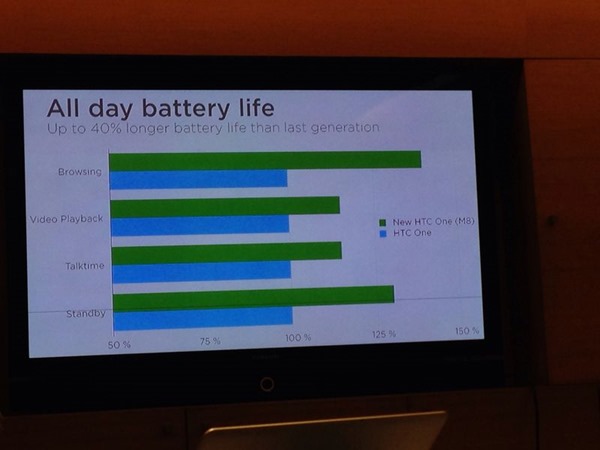Display and Processor
The HTC One M8 arrives with a 5 inch Full HD Super LCD3 capacitive touchscreen display boasting 1080p resolution translating to a pixel density of 441 pixels per inch. On the other hand, the yesteryear model is fitted with slightly smaller 4.7 inch Super LCD3 capacitive touchscreen display with a screen resolution of 1080p that translates to an eye-popping 469 ppi pixel density as it packs more pixels in the small sized display. Moveover, both the displays are protected using the Corning Gorilla Glass 3 to prevent the scratches. Both the phones are equipped with loads of power in the processing segment. The One M8 includes a quad-core 2.3 GHz Qualcomm Snapdragon 801 processor accompanied by Adreno 330 GPU, whereas the One 2013 model comes with a Qualcomm Snapdragon 600 chipset with a quad-core 1.7 GHz processor and Adreno 320 GPU. The latest Snapdragon 801 chipset supports processors with faster clock speeds, quicker access to the onboard storage, faster transfer speeds and many other benefits.
Camera and Memory
HTC carries the credit of making a difference in the smartphone industry with the launch of the Ultrapixel cameras that let in more light thereby offering better performance in low light environments. The 2013 HTC One has a good camera, but the downside is that this 4 MP UltraPixel camera allows more light and makes the images appear too shiny. However, the Zoe camera features are a great addition to enhance the user experience. Also, there is a 2.1 MP front-facer in the handset with support to FHD video recording. In comparison, the HTC One M8 includes a Dual 4 MP UltraPixel rear snapper with dual LED flash and the highlight of this camera is that it refocuses the object even after capturing and provide relatively better low light performance that the M7. The 5 MP front-facing camera on the HTC One M8 with FHD video recording delivers good performance. Further, the volume rocker on the right spine of the handset doubles as the camera shutter and the camera interface is snappier taking only 1 second to launch. There are attractive features such as Zoe that allows users to copy a person in one image to another using the smartphone. Both the smartphones come with 2 GB of RAM that should be sufficient for handling the high intensity games and multi-tasking. While the One 2013 model comes only in two variants – 32 GB and 64 GB of internal storage, its successor arrives in three options – 16 GB, 32 GB and 64 GB of onboard memory capacity. Also, the presence of a micro SD card slot for up to 128 GB of expandable memory support in One M8 is a worthy upgrade. In addition to this, users of the handset will receive 65 GB of free Google Drive cloud storage space as well.
Battery and Features
The HTC One may not satisfy all the users with its 2,300 mAh battery, however the One M8 with a juicier 2,600 mAh battery can deliver enhanced battery life of about 40 percent more than that of the One M7.
Talking of other features, both the smartphones come with enough connectivity aspects such as Wi-Fi, Bluetooth, LTE, 3G, Bluetooth 4.0 with A2DP, NFC and micro USB with USB OTG support, hence there are complaints in this segment. Also, the dual speakers in the HTC One smartphones are accompanied with the BoomSound feature and Beats Audio that deliver amazing sound quality never seen on any other smartphone. Furthermore, both the phones are fueled by Android 4.4.2 KitKat operating system with possible chances of receiving an upgrade pretty soon. The One M7 is topped with Sense 5.0 that is good, but the Sense 6.0 in the One M8 is very good addressing the lacking qualities in its previous version.
Key Specs
Conclusion
The HTC One M7 is a good smartphone with a sturdy build quality and impressive features, but its sequel – the One M8 is a snappier and faster phone with rounded edges that offer a premium and comfortable feel with additional features for an enhanced user experience. The bigger brother of HTC One also comes with a larger screen, better camera with refocusing aspect and additional aspects.

